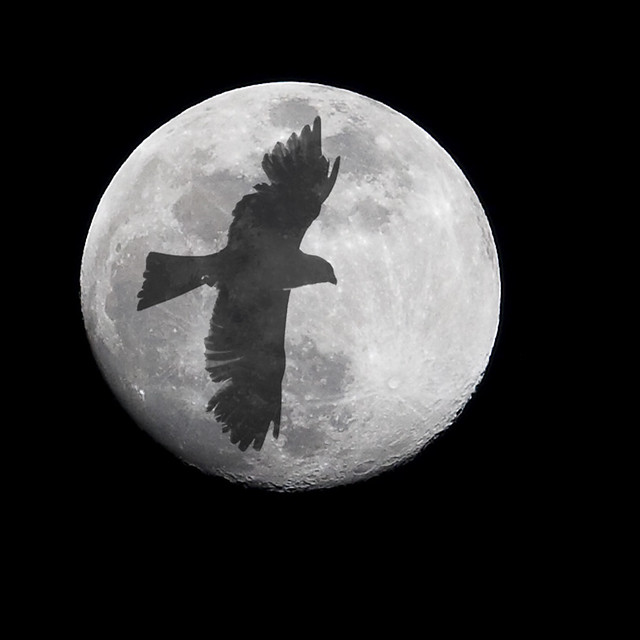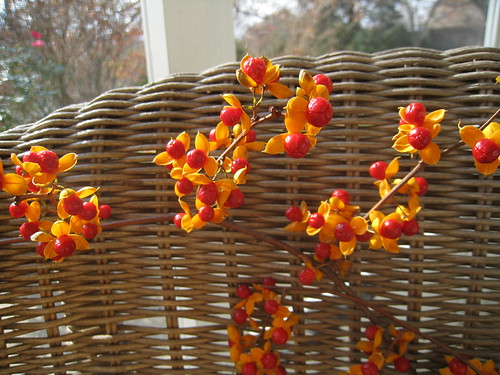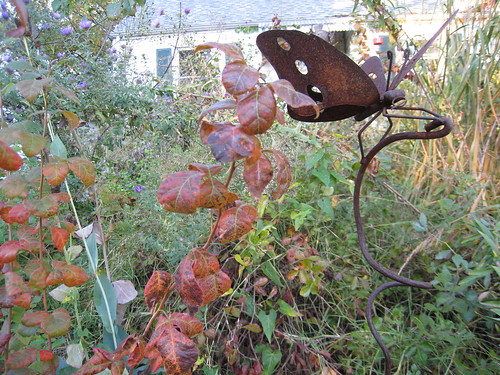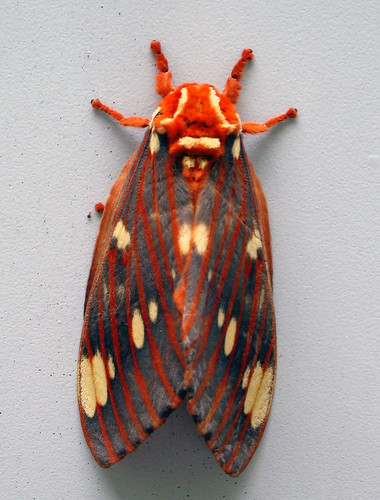I strolled around the turrets of Hogwarts Castle, enjoying the sweeping views of tropical foliage. From the ravine below, a hummingbird came into view. It was large--something along the lines of a Violet Sabrewing. I reached out and held the bird. It seemed to be in some kind of transitional plumage: purple, mixed with buff and green. Then I was startled by sounds of an uproar coming from Hogwarts. A group of boys rode some kind of magical escalator, screaming with laughter. The bird vanished. Beautiful singing of pygmies (or Solomon Islanders) woke me. That's because my alarm plays CDs; this morning, it's Deep Forest's controversial 1993 album, Deep Forest.
Wondering what I had eaten the night before to produce such a vivid dream, I finished up my morning chores and headed to work without a moment to spare. As I headed for the gate Tuesday, Nov.15, an unmistakable silhouette popped up into the sweet gum tree--a hummingbird! I ran back to the house for my binoculars. Like my dream bird, the hummer had vanished and I headed for work.
I posted my report of the hummingbird on MObirds, the listserve of the Audubon Society of Missouri. I also contacted my friends Lanny Chambers and Margy Terpstra. Margy lives nearby. She and her husband are wild bird photographers. They have a wealth of subjects in their beautiful, wildlife-friendly yard. Lanny is a hummingbird bander who has visited my yard many times chasing fall hummers. He also holds the record for the only Allen's Hummingbird in the state--banded in his own yard!
I didn't return up till after dark on Tuesday. Wednesday morning the temperature on my back porch was 33 ° F. The bird bath had a skin of ice, but I caught a brief view of a dark bird at the nectar feeder. Surely this is some rare stray! Wed. evening that I saw the bird again, and was shocked to see that it looked exactly like a male Ruby-throated Hummingbird! Ruby-throats are the only hummer normally present in our area, but they should be gone by October 10 or so. Males migrate earlier than females and juveniles. I don't remember ever seeing one after mid-September.
I didn't get to study the bird long before the light was gone. That's when I checked my email to find Margy's wonderful photos of Lanny examining the bird in hand. It was indeed a male Ruby-throat. It may not be the latest Ruby-throat ever, but it's likely to be the latest confirmed record. As you can see in the photos, he is a worn individual. His weight was good however, and Lanny saw no reason that the bird would have trouble migrating to his winter home in southern Mexico or even Panama.
I spotted the bird again Thursday and Friday mornings and evenings, still visiting the last of my Big blue sage (Salvia guaranitica) and Mexican bush sage (S. leucantha). The sages and the bird had weathered near-freezing temperatures for 3 nights. Saturday we warmed up to 60°, but I didn't see the bird. Let's hope that soon he'll be rubbing shoulders with Violet Sabrewings. Thanks to Margy Terpstra for the use of her photos and to Lanny Chambers for enabling us to play a role in the study of hummingbird migration.
You might also like these posts:
 |
| Mexican Sage is a Hummer Magnet |
 |
| Hole in One! |
 |
| Rootin' Tootin' Rufous |















